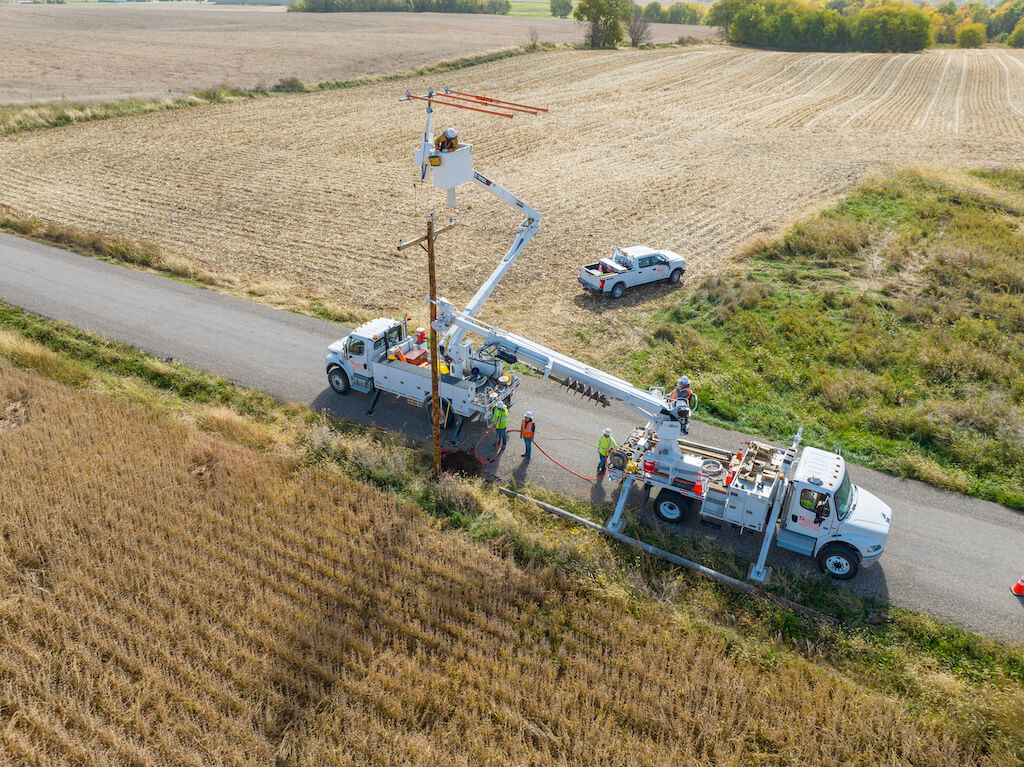Across industries, field operations rely heavily on GIS to collect, manage, and analyze spatial data. Geographic Information Systems (GIS) must be utilized effectively in order to manage data capture and ensure that all data is accurate. With the amount of data needed, field operators and technicians need to be able to collect survey data quickly while ensuring they are collecting accurate, quality data.
Advancements in the field have made it even easier to collect location data efficiently and accurately. GIS system software utilizes technology to digitize data and reduce the need for manual processes. Removing manual processes reduces the chance of errors and boosts productivity. In addition, these tools have reshaped how field data is collected, reducing time-consuming processes and converting important data into digital formats for easy access and analysis.
Challenges of GIS Field Data Collection
Crews in the field face many challenges that can threaten productivity and the validity of collected data. From inconsistent formatting to entry errors to issues accessing data, there are many different challenges that GIS field technicians face. Obstacles such as these disrupt and inhibit efficient operations.
In addition to these challenges, data collection that is incomplete or compromised records can delay project timelines and increase labor costs. It can also lead to inaccurate analysis of data and can lead to flawed decision making, affecting the performance of an organization beyond each individual project. By streamlining data collection in the field, you can conquer these challenges and boost the productivity of your organization.
The Rise of Handheld GIS Systems
One of the biggest advancements in the field of data collection has been the shift from bulky, heavy equipment to handheld GIS devices. In fact, many of these platforms, such as OpSource’s suite of software, can all be accessed from a smartphone or tablet.
These handheld devices offer many benefits over traditional equipment. These benefits include:
- Portability
- User-Friendly
- Real-Time Data Capture
- Real-Time Data Analysis
The small size and low weight of these devices allow them to be easily transported, while the user-friendly interface allows for quicker learning and easier use among crews.
OpSource’s software is built for the field and tailored to meet the needs of complex data collection in the field. Our software can support a variety of data inputs, custom forms, exact GPS coordinates, real time analysis and mapping, and even photos can be taken directly from the software. With all of these features, your crews are more flexible and more informed. Make better decisions and boost productivity seamlessly.
The Need for Standardized Data
GIS data collection systems also allow you to easily standardize your data – but why is this important? Having a standardized approach to your data leads to more consistent and accurate data. Any chance of variability can lead to inaccurate, inconsistent, or missing data.
Creating protocols for your technicians allows any and all collected data to be consistent and therefore comparable. This leads to better analysis and reporting of important data.
OpSource’s software can help fill in the gap, offering custom forms that allow you to easily set forth your own standards for data. With these protocols in place, all data collection can be easily replicated across projects and reduce the change of errors in collected information. In addition, having your crews aligned and all on the same page leads to reliable data and accurate results.
The Benefits of GIS Data Collection Technology
These systems offer a variety of benefits including:
- Streamlined Data Integration
Data collection software can be easily integrated into your organization’s central systems and utilized by everyone in the organization. By integrating these systems, your data can be accessed by those who need it, when they need it in real time.
Data can be analyzed as soon as it is collected. Decisions can be made faster. Having streamlined data integration decreases the change of lost or corrupted data and leads to better decisions, faster.
- Efficiency
These systems also increase company efficiency across the board. Data can be collected faster and more accurately, which then trickles down, allowing faster analysis and quicker insights that can lead to better, more informed decisions faster.
Processes can be automated, data is collected faster, meaning that projects can be completed on time, which can reduce operational costs overall. With OpSource, upgrade your field operations and drive productivity.
- Accountability
GIS data collection systems can be used to track teams, task allocation, and performance. Utilize better workflows, identify potential bottlenecks or gaps in performance. Not only can these tools be used to boost operational productivity, but can be used to boost morale and keep teams accountable.
- Better Decision Making
Another huge benefit of GIS data collection technology is that more accurate, timely data leads to better decisions. With reliable, real-time data, stakeholders are more knowledgeable and can make more strategic decisions through timely insights. Drive better decision making across your organization with OpSource.
- High Quality Data
Perhaps one of the biggest benefits of these advancements in technology is better, more accurate, more consistent data. With standardized data, you can better compare data, identity trends, and drive insights.
Want to learn more and revolutionize your GIS data collection? Contact us today to learn more about how our software can help you streamline your field operations and boost productivity.



